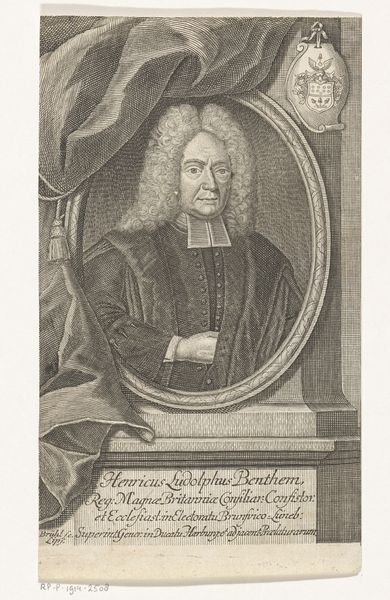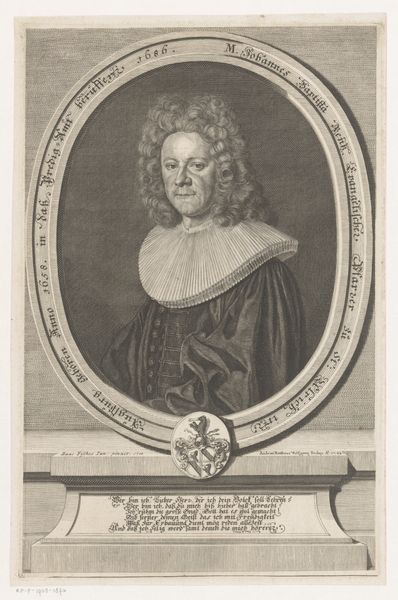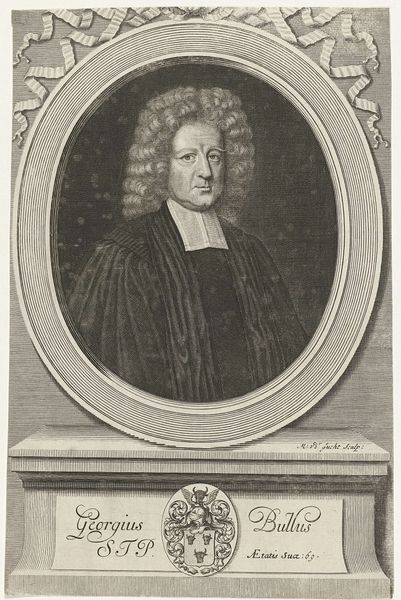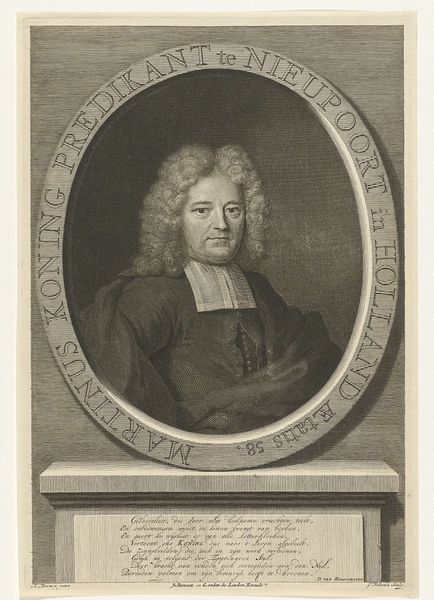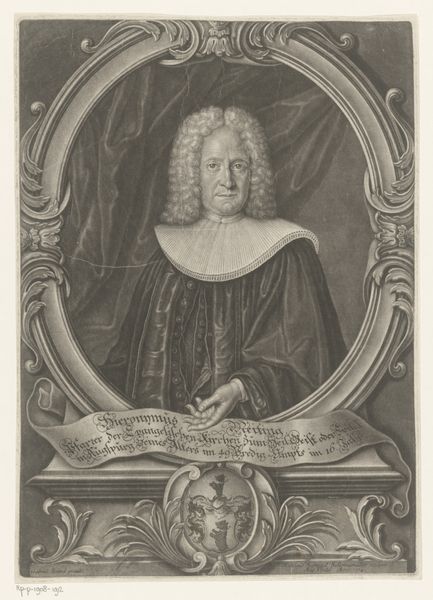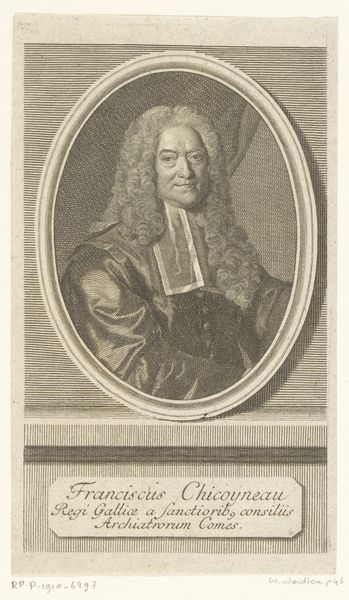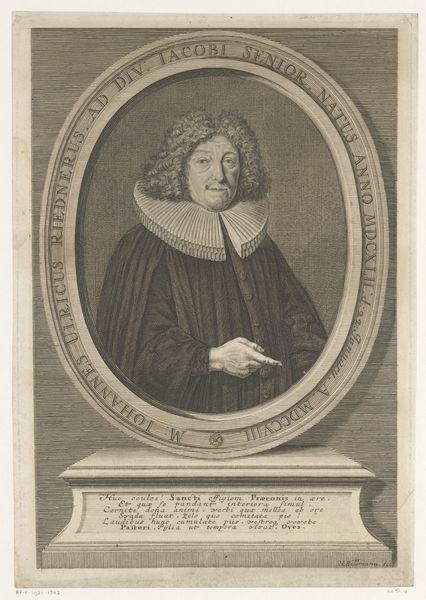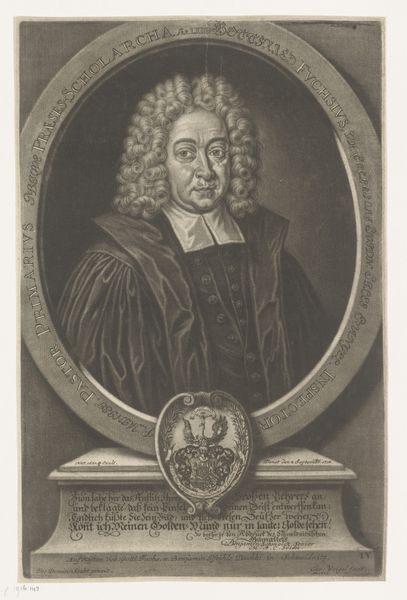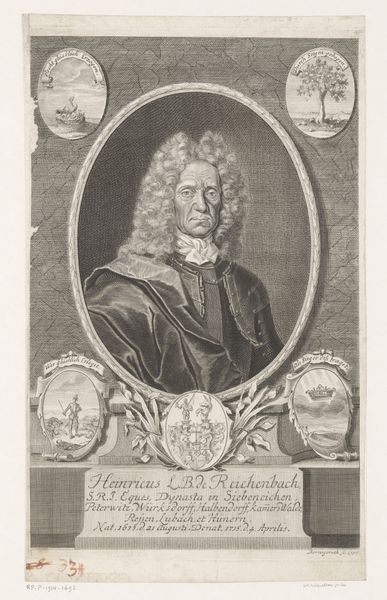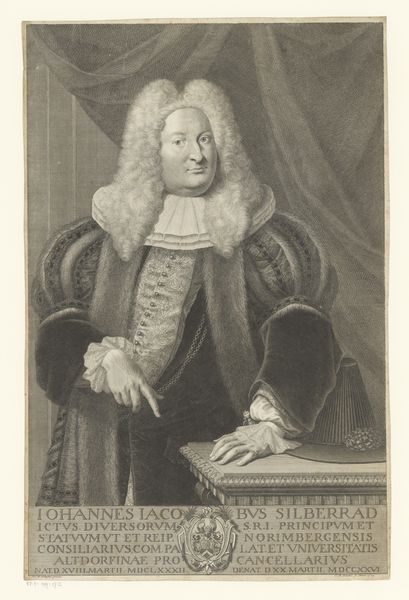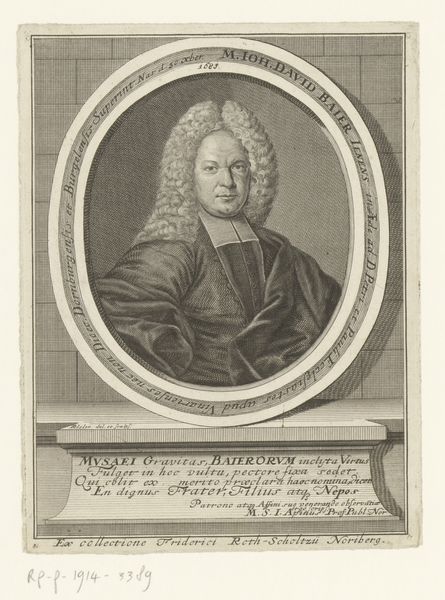
print, engraving
#
portrait
#
baroque
# print
#
history-painting
#
academic-art
#
engraving
Dimensions: height 298 mm, width 186 mm
Copyright: Rijks Museum: Open Domain
Curator: This is a 1724 engraving currently held in the Rijksmuseum, titled "Portret van Heinrich Ludolph Bentheim," created by Christian Fritzsch. Editor: My initial impression is one of austere formality. The subject is framed within an oval, and the whole piece feels very…structured. Curator: Engravings, particularly portraits like this one, were often commissioned by the sitter or their family as a way of preserving their image and social standing. The precision of the lines speaks to the skill involved in the printmaking process. Each line meticulously etched into the plate to create tone and form. Editor: Exactly. The inclusion of the coat-of-arms, the text underneath. Bentheim's status is visually broadcast, but look at the symbols in his apparel: the simple dark robe with the stark white tabs suggesting piety and learnedness. It says something about his religious status. Curator: Right. Consider the paper itself. Likely a high-quality laid paper, prized for its strength and ability to take the fine details of the engraved lines. These prints were relatively accessible compared to painted portraits, which contributed to their wide distribution and influence. This was almost a proto form of social media. Editor: I see the oval frame itself almost as a window, drawing our eye into a specific curated view of the man. The curtain is being pulled back for our benefit, allowing us a brief glimpse. It highlights both the person, but also an expectation of lasting reputation. Curator: Looking at Fritzsch's process and materials provides insights into the modes of artistic production in the 18th century and what sort of images and the people who would commission them, would endure. Editor: And focusing on the imagery gives us a sense of how status and persona were crafted and communicated during the period. They tell stories about faith, learning, and the individual's place within society. It all offers insight into how cultural values endure through representation.
Comments
No comments
Be the first to comment and join the conversation on the ultimate creative platform.
